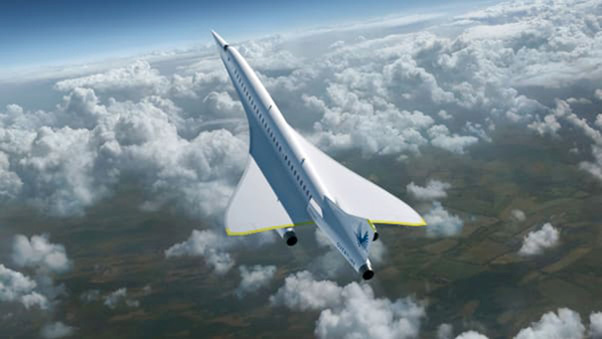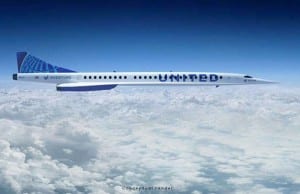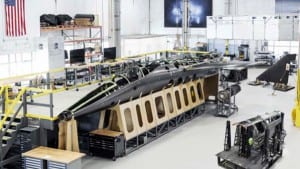Supersonic demonstrator XB-1 to flight tests at Mojave Air and Space Port

by Cathy Hansen, special to Aerotech News
Boom Supersonic, the aerospace company building the world’s fastest airliner is partnering with Flight Research, Inc. at Mojave Air and Space Port to do flight test work in the supersonic corridor, located in the restricted airspace known as R-2515.
FRI will provide Flight Test Support to Boom with a two-seat, supersonic trainer, for pilot proficiency training as well as a chase aircraft during XB-1’s flight test program.
According to Boom Supersonic website, “XB-1 is the world’s first independently developed supersonic jet and will demonstrate key technologies for Overture, Boom’s commercial airliner, such as advanced carbon fiber composite construction, computer-optimized high-efficiency aerodynamics, and an efficient supersonic propulsion system. XB-1 is the end product of years of development effort, including multiple wind tunnel tests, dozens of structural tests, hundreds of simulation iterations, and tens of thousands of work hours.”

Move from Colorado to Mojave
The XB-1 will be disassembled and transported to Mojave, and reassembled in one of FRI hangars located at the Mojave Air and Space Port. Boom will also sub-lease a portion of the FRI Headquarters where they plan on building a custom space to support the SB-1, including a fully instrumented flight test control room and an XB-1 simulator room with cockpit and visual displays.
In a press release, Boom founder and CEO, Blake Scholl said, “Flight Research provides essential equipment and superior facilities at the Mojave Air and Space Port, enabling us to finalize and fly XB-1.”
Scott Glaser, senior vice president of Operations at FRI said, “With Boom, we’re presented with an opportunity to partner with a dynamic and ground-breaking organization that is challenging conventional wisdom about flying.”
“This will be a new supersonic testing project for us, and we couldn’t be more excited to welcome Boom to this historic airfield and to outfit a space to meet their needs. We look forward to contributing to the return of supersonic commercial air travel.
A statement in a Boom Supersonic press release from January 2020, “Boom is currently building XB-1, which will help refine the design and engineering of Overture, Boom’s revolutionary supersonic commercial airliner. XB-1 shares key technologies with Overture, such as advanced carbon fiber composites and a refined delta wing planform. Lessons from XB-1 have already helped optimize Overture and will prove in-flight key technologies for safe, efficient travel at supersonic speeds.”

United Airlines to buy supersonic aircraft
Just recently it was announced, “United Airlines has agreed to purchase 15 supersonic aircraft from Boom Supersonic, with an option to increase that order to 35 jets,” the companies announced Thursday. That agreement, though, is still subject to change depending on the outcome of United’s safety testing and also Boom’s ability to deliver on its promises despite never having built or flown a full-scale supersonic jet before.”
Boom CEO briefs Congress
In April 2021, CEO Blake Scholl announced that he would be testifying before the House of Representatives Subcommittee on Aviation at a hearing entitled “The Leading Edge: Innovation in U.S. Aerospace.
“Supersonic flight will unlock new possibilities for human connection and for business, but this is only possible thanks to the leadership of Congress and the federal government to support emerging aviation technology,” said Scholl. “I’m deeply honored to address the House Subcommittee on Aviation to shed light on these technologies and ask Congress to continue to support this important work. The reintroduction of supersonic flight, along with the integration of other new kinds of aircraft, will ensure continued job growth in this important sector and help ensure the U.S. maintains its global leadership in innovation and the future of transportation.”

Boom Supersonic CEO Blake Scholl
Blake Scholl founded Boom Supersonic in September 2014 with the goal of making high-speed travel mainstream and enabling a new world of human connection. Blake is passionate about tackling big problems which the world has overlooked. After seeing Concorde in a museum, he dreamed of the return of commercial supersonic flight. A few years later, Blake dove into aerospace engineering — reading textbooks and taking classes — to figure out from first principles how to enable a supersonic renaissance. As a leader, Blake focuses on inspiring the best people from a range of disciplines to unite in pursuit of Boom’s vision.
Prior to founding Boom, Blake held leadership roles at Amazon and Groupon and co-founded mobile technology startup Kima Labs.
Blake’s interest in aviation started in childhood—he grew up in suburban Cincinnati, where his parents often took him to the local airport to watch Cessna’s take off and land. He started flying for fun in college, earning his private pilot license in 2008 and instrument rating in 2011.
Blake holds a BS in Computer Science from Carnegie Mellon University; he lives in Denver and is the father of three.



Ingen kommentarer:
Legg inn en kommentar
Merk: Bare medlemmer av denne bloggen kan legge inn en kommentar.